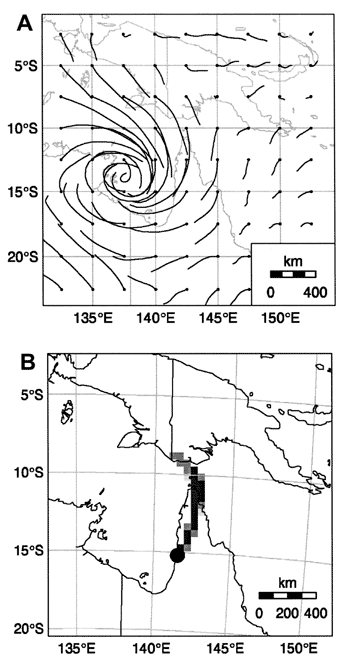Volume 7, Number 5—October 2001
Dispatch
Wind-Blown Mosquitoes and Introduction of Japanese Encephalitis into Australia
Figure 2

Figure 2. . The estimated flight trajectories at 100 m (A) and backtrack simulations (B) of mosquitoes from the Mitchell River for December 27, 1997. Shading represents the number of back trajectory endpoints per km2 per million simulated mosquito trajectories, with white = 0, light = <10, medium 10 to 20, and dark >20.
Page created: April 26, 2012
Page updated: April 26, 2012
Page reviewed: April 26, 2012
The conclusions, findings, and opinions expressed by authors contributing to this journal do not necessarily reflect the official position of the U.S. Department of Health and Human Services, the Public Health Service, the Centers for Disease Control and Prevention, or the authors' affiliated institutions. Use of trade names is for identification only and does not imply endorsement by any of the groups named above.